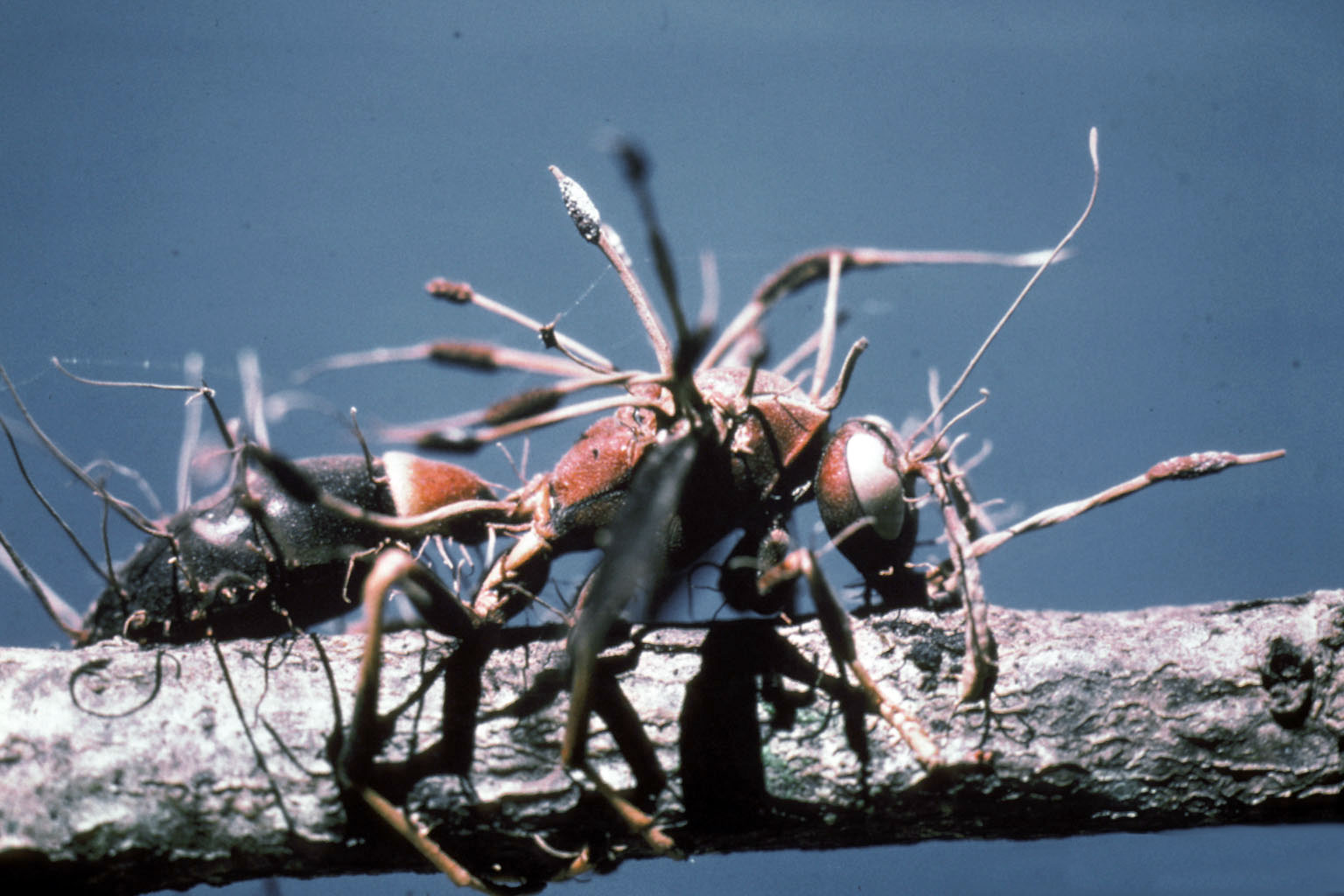|
Metarhizium Rileyi
''Metarhizium rileyi''Kepler, Humber, Bischoff, Rehner SA (2014) ''Mycologia'' 106(4): 824. is a species of entomopathogenic fungus in the family Clavicipitaceae The Clavicipitaceae are a family of fungi within the order Hypocreales. A 2008 estimate placed 43 genera in the family, but recent work has increased this number to 97. Phylogeny Molecular phylogenetic analysis of multigene DNA sequence data in ...; there is extensive literature under its synonym ''Nomuraea rileyi''. References External links * * Clavicipitaceae Hypocreales genera Biological pest control Fungi described in 1883 {{Hypocreales-stub ... [...More Info...] [...Related Items...] OR: [Wikipedia] [Google] [Baidu] |
Entomopathogenic Fungus
An entomopathogenic fungus is a fungus that can kill or seriously disable insects. Typical life cycle These fungi usually attach to the external body surface of insects in the form of microscopic spores (usually asexual, mitosporic spores also called conidia). Under the right conditions of temperature and (usually high) humidity, these spores germinate, grow as hyphae and colonize the insect's cuticle; which they bore through by way of enzymatic hydrolysis, reaching the insects' body cavity (hemocoel). Then, the fungal cells proliferate in the host body cavity, usually as walled hyphae or in the form of wall-less protoplasts (depending on the fungus involved). After some time the insect is usually killed (sometimes by fungal toxins), and new propagules (spores) are formed in or on the insect if environmental conditions are again right. High humidity is usually required for sporulation. Groups The entomopathogenic fungi include taxa from several of the main fungal groups and ... [...More Info...] [...Related Items...] OR: [Wikipedia] [Google] [Baidu] |
Clavicipitaceae
The Clavicipitaceae are a family of fungi within the order Hypocreales. A 2008 estimate placed 43 genera in the family, but recent work has increased this number to 97. Phylogeny Molecular phylogenetic analysis of multigene DNA sequence data indicates the taxon Clavicipitaceae is paraphyletic, and consists of three well-defined clades, at least one of which is shared with members of another fungal family (Hypocreaceae). The evolution within the Clavicipitaceae is marked by interkingdom host jumping, and the range of this large and heterogeneous fungal group spans mutualistic plant symbionts, as well as parasites of plants, insects, and other fungi. Significance Many of its members produce alkaloids toxic to animals and humans. One of its most infamous species is ''Claviceps purpurea'', which has historical significance as the cause of St. Anthony's fire, also known as ergotism. Ergotism is caused by ergot alkaloids, such as ergotamine and ergocristine, which are chemical d ... [...More Info...] [...Related Items...] OR: [Wikipedia] [Google] [Baidu] |
Hypocreales Genera
The Hypocreales are an order of fungi within the class Sordariomycetes. In 2008, it was estimated that it contained some 237 genera, and 2647 species in seven families. Since then, a considerable number of further taxa have been identified, including an additional family, the Stachybotryaceae. According to the Catalog of Life, the Hypocreales contains 6 families, 137 genera, and 1411 species. Species of Hypocreales are usually recognized by their brightly colored, perithecial ascomata, or spore-producing structures. These are often yellow, orange or red. Genera ''incertae sedis'' According to a 2020 review of fungal classification, the following genera within the Hypocreales have an uncertain taxonomic placement (''incertae sedis''), and have not been assigned to any family: *'' Acremoniopsis'' – 1 sp. *''Berkelella'' – 2 spp. *''Bulbithecium'' – 1 sp. *'' Cephalosporiopsis'' – 10 spp. *'' Chondronectria'' – 1 sp. *'' Cylindronectria'' – 1 sp. *'' Diploospor ... [...More Info...] [...Related Items...] OR: [Wikipedia] [Google] [Baidu] |
Biological Pest Control
Biological control or biocontrol is a method of controlling pests, such as insects, mites, weeds, and plant diseases, using other organisms. It relies on predation, parasitism, herbivory, or other natural mechanisms, but typically also involves an active human management role. It can be an important component of integrated pest management (IPM) programs. There are three basic strategies for biological pest control: classical (importation), where a natural enemy of a pest is introduced in the hope of achieving control; inductive (augmentation), in which a large population of natural enemies are administered for quick pest control; and inoculative (conservation), in which measures are taken to maintain natural enemies through regular reestablishment. Natural enemies of insect pests, also known as biological control agents, include predators, parasitoids, pathogens, and competitors. Biological control agents of plant diseases are most often referred to as antagonists. Biologic ... [...More Info...] [...Related Items...] OR: [Wikipedia] [Google] [Baidu] |

